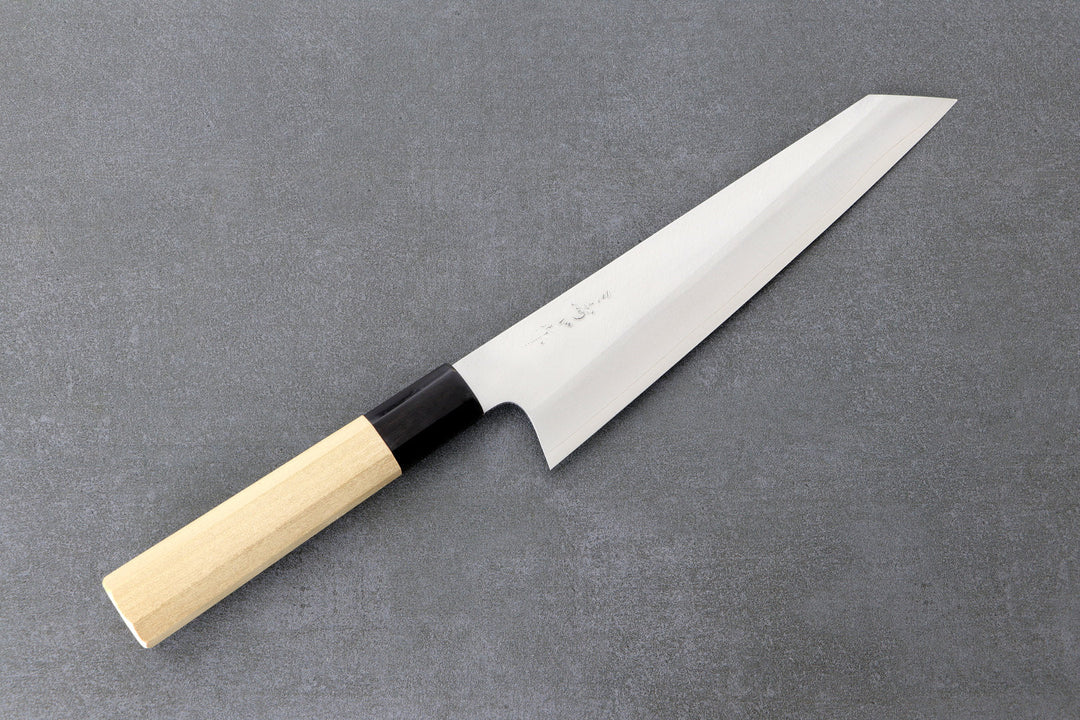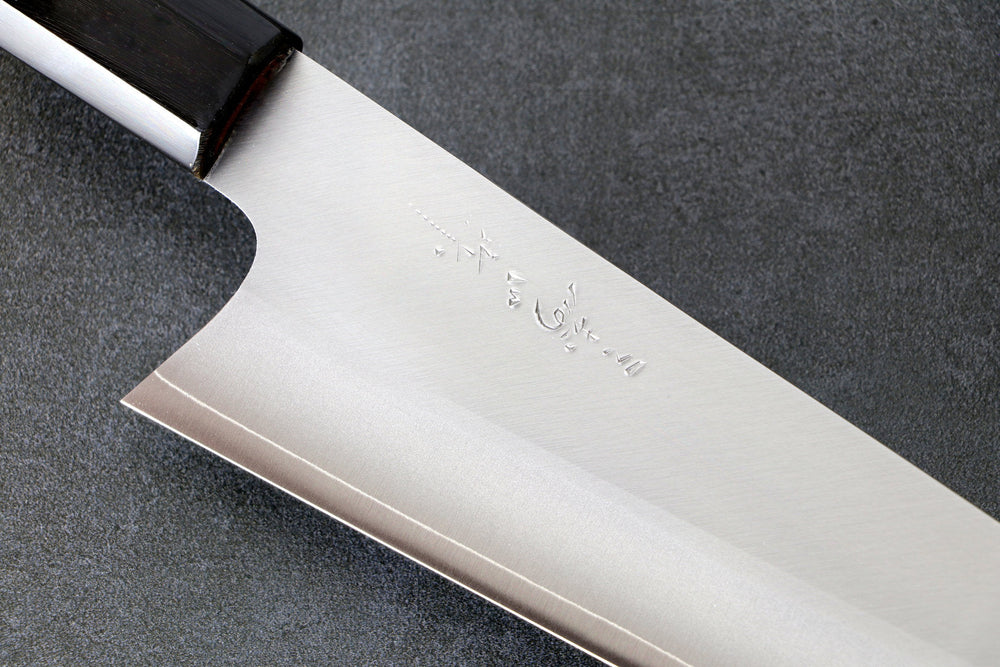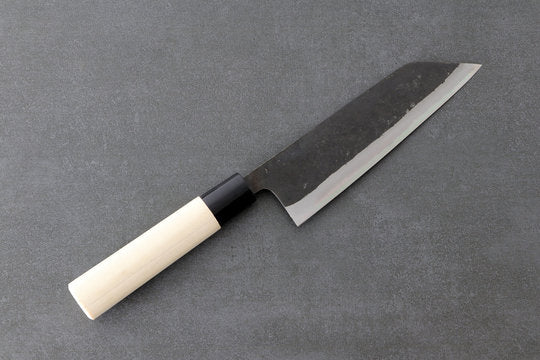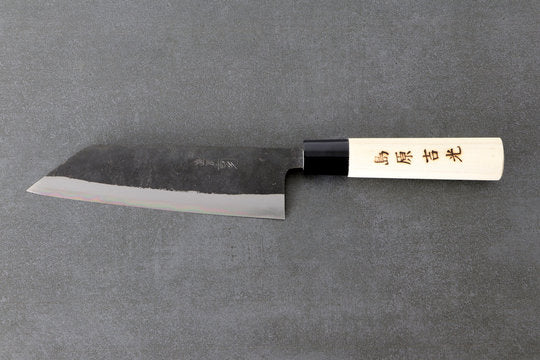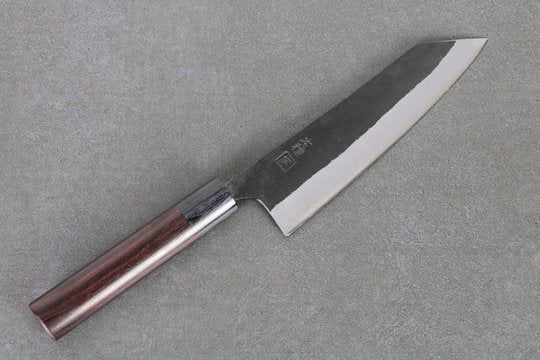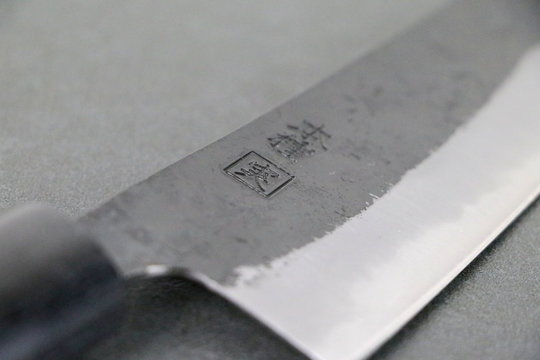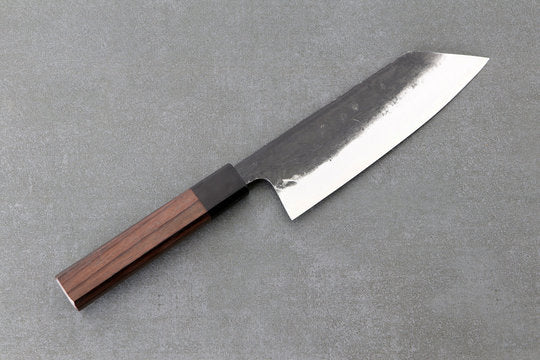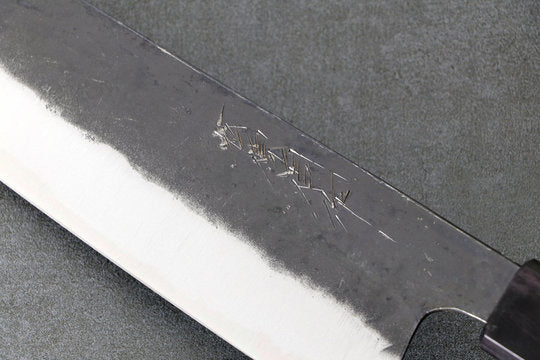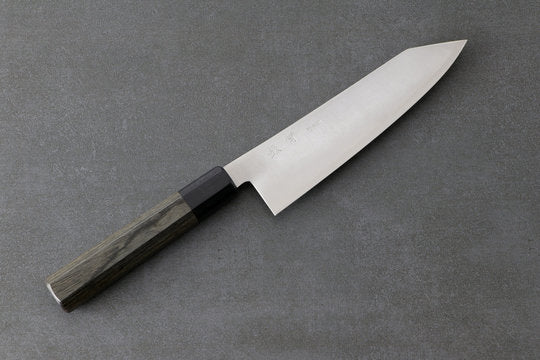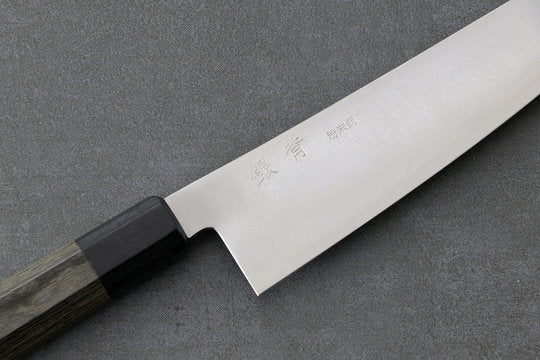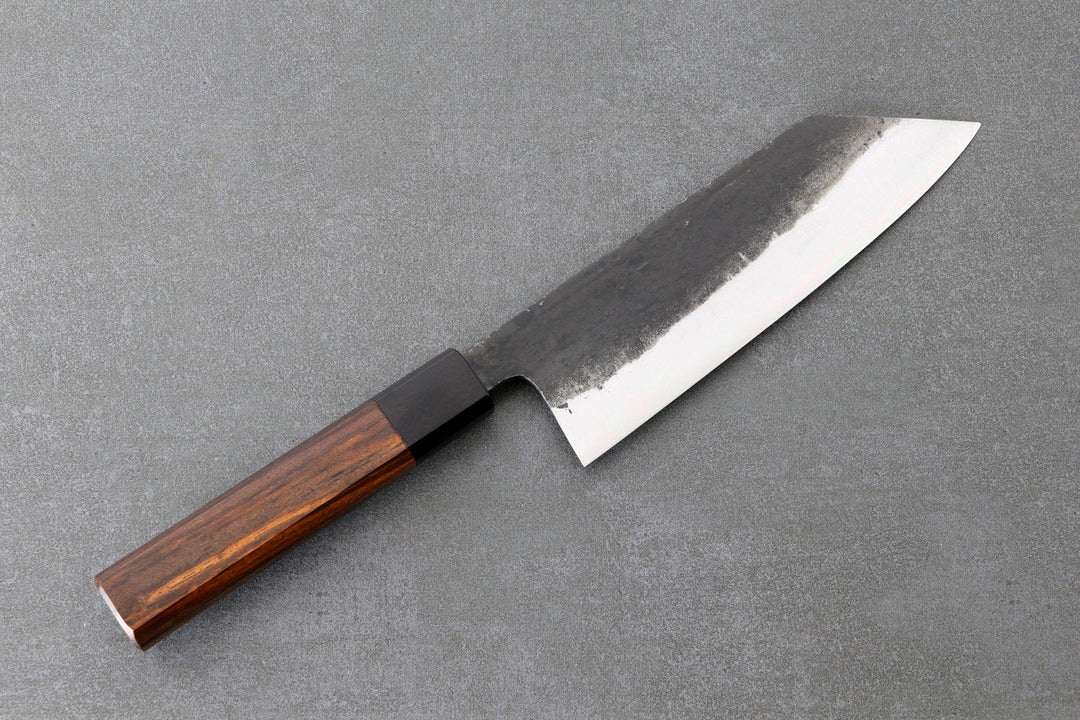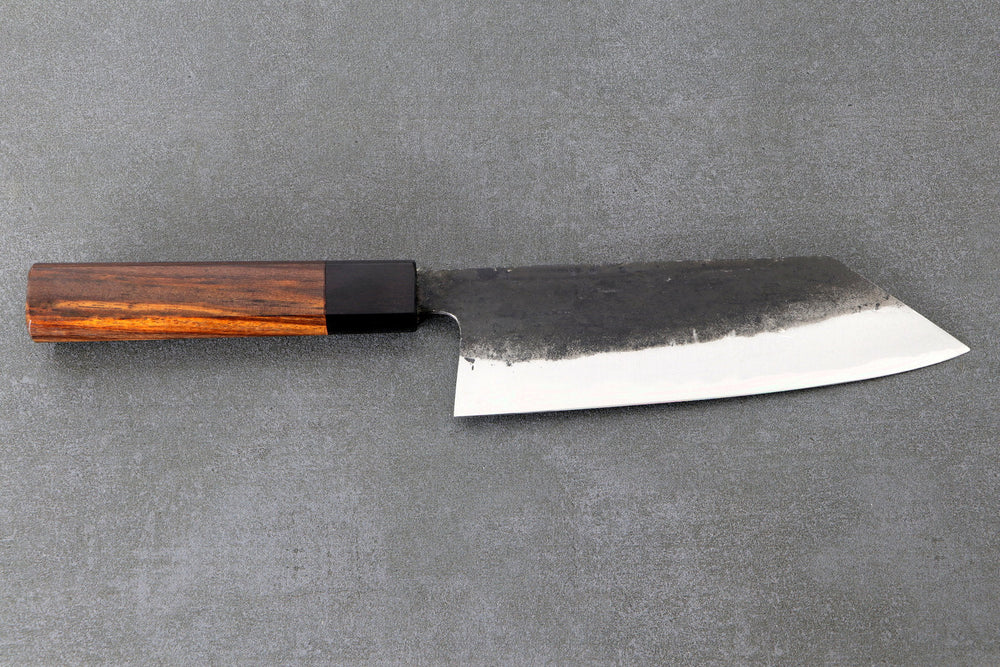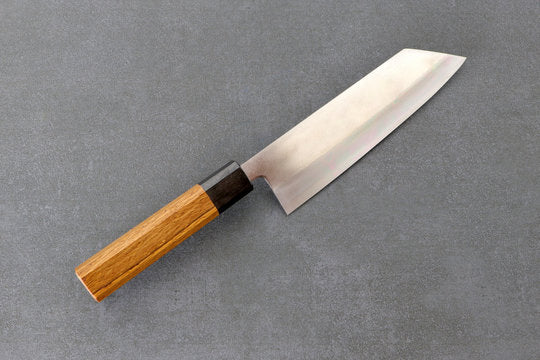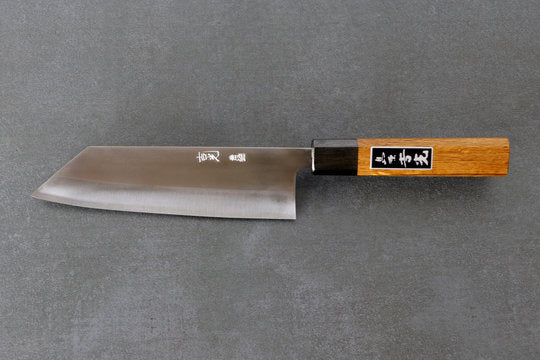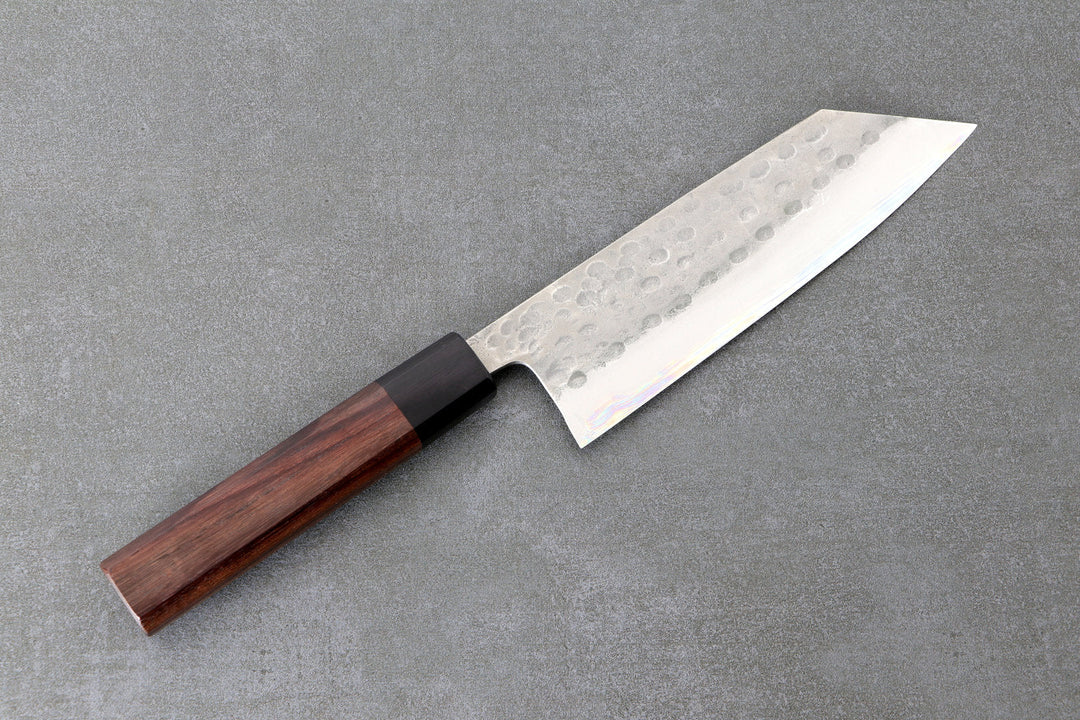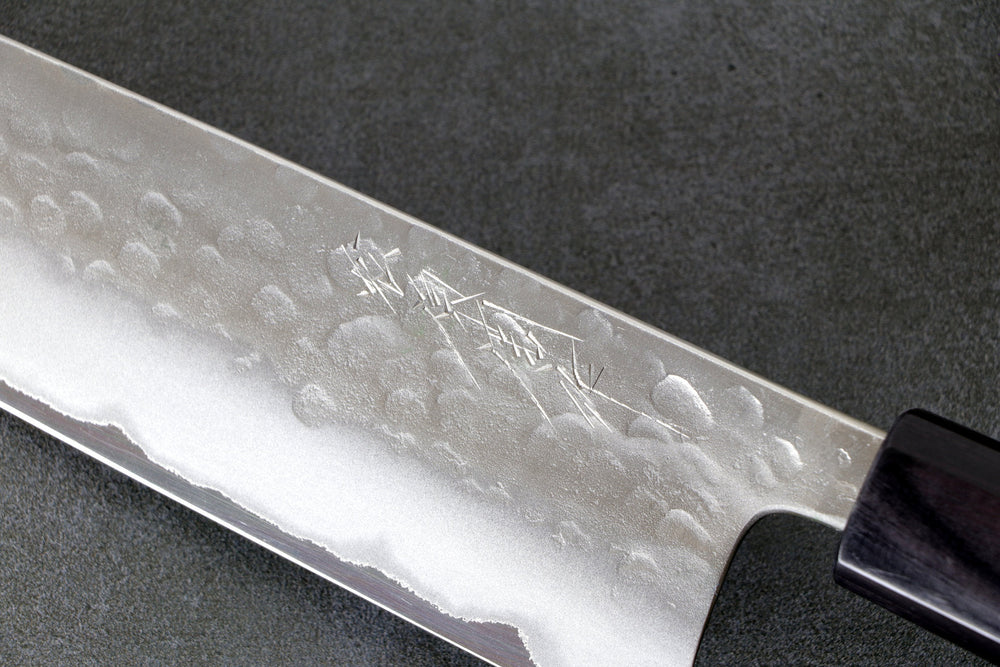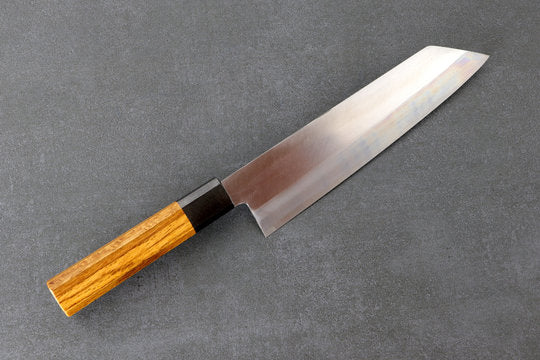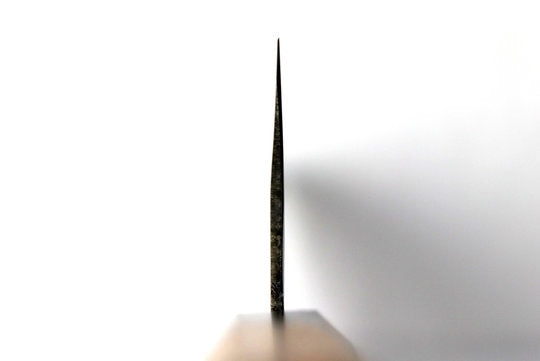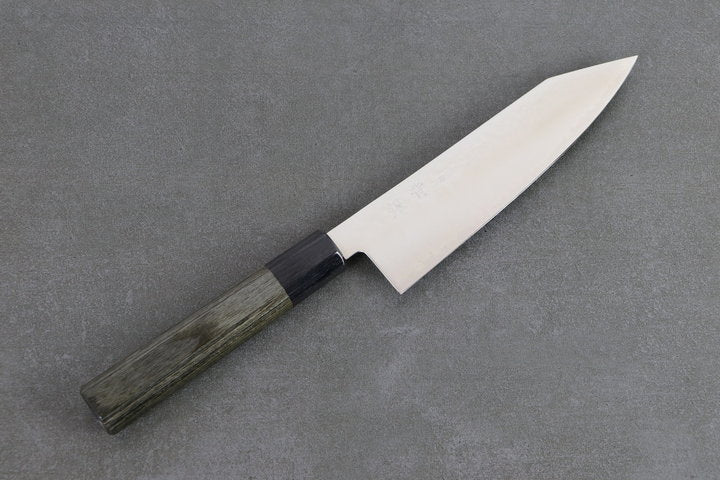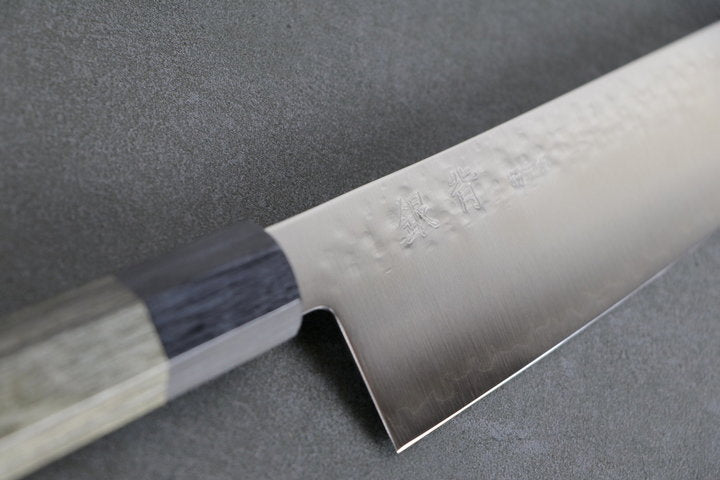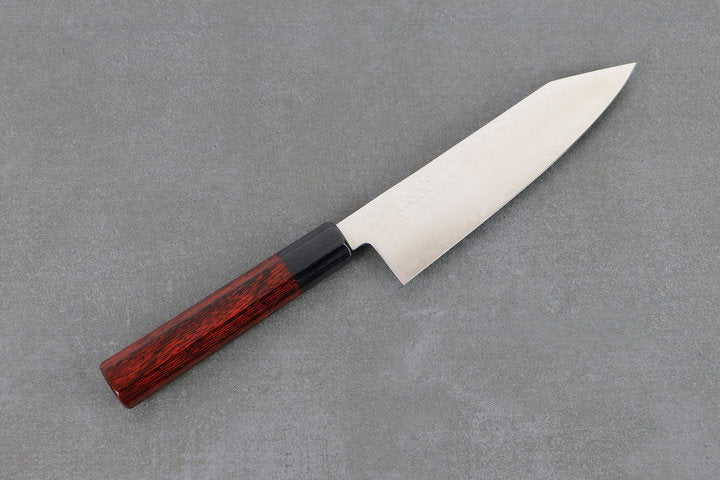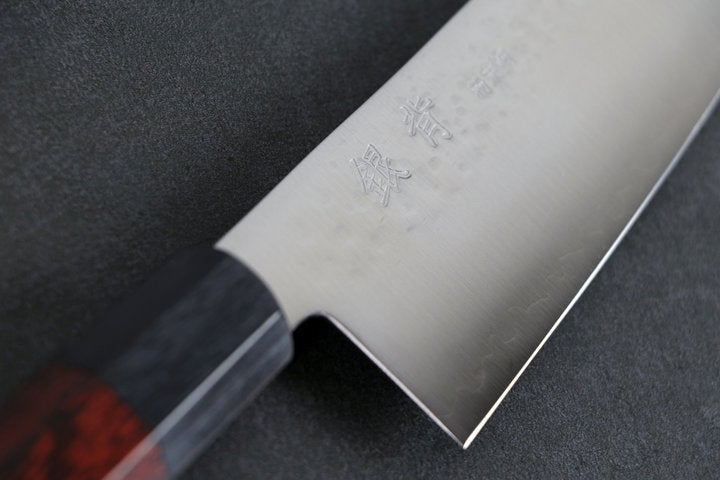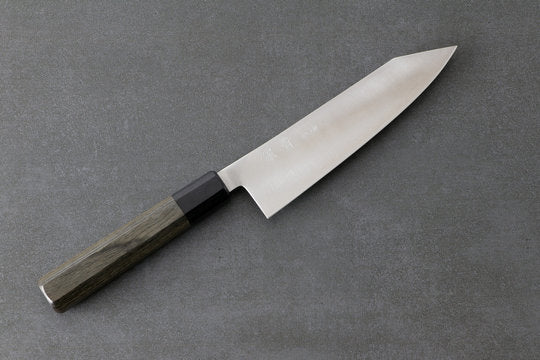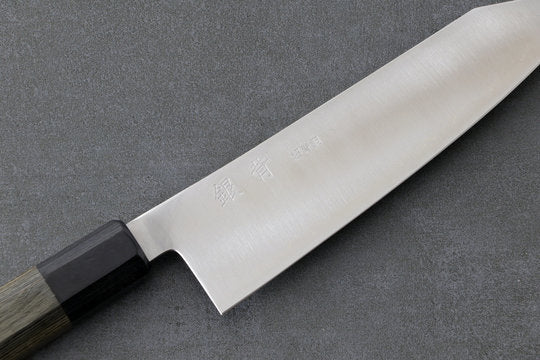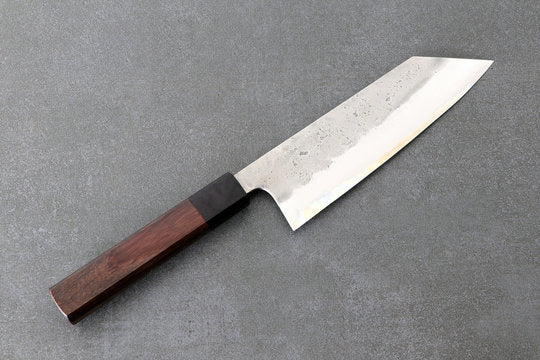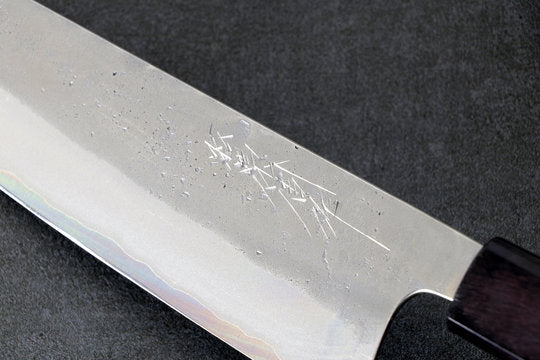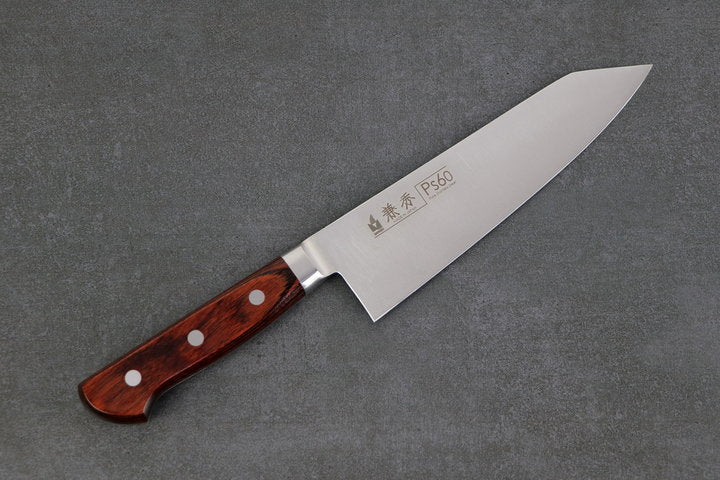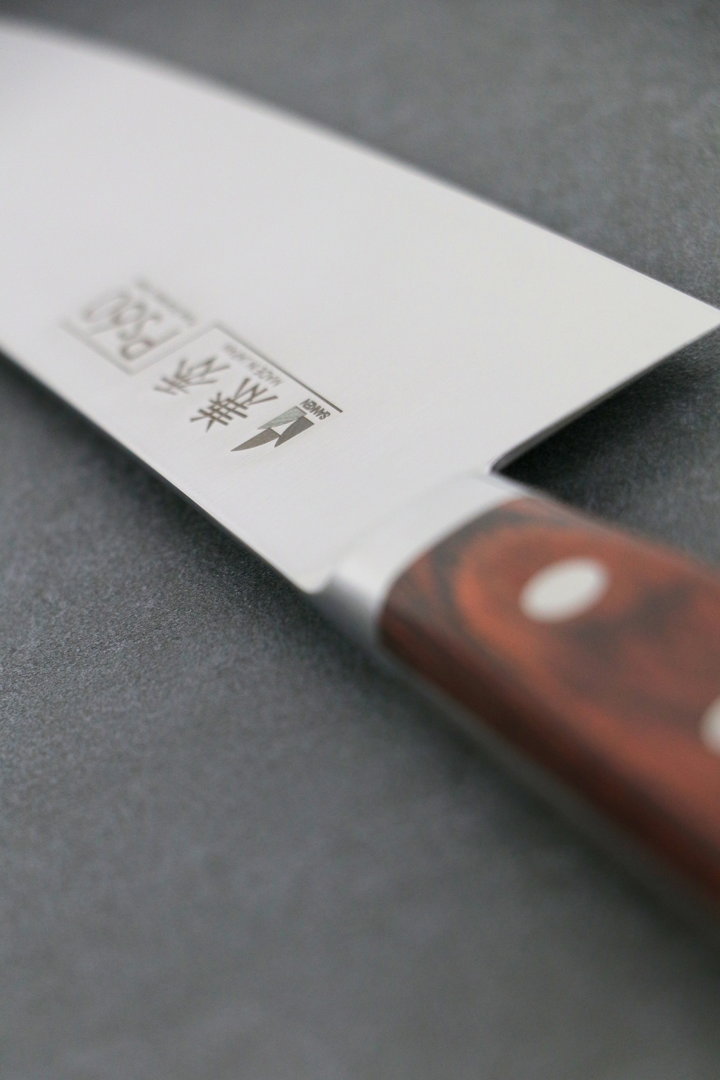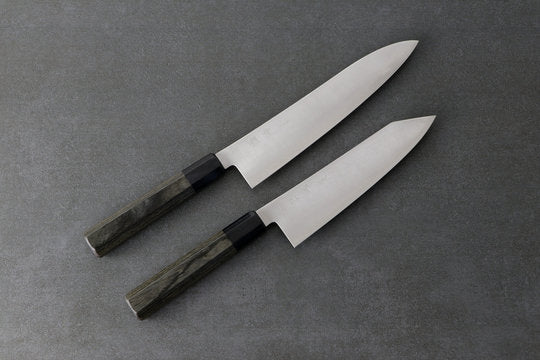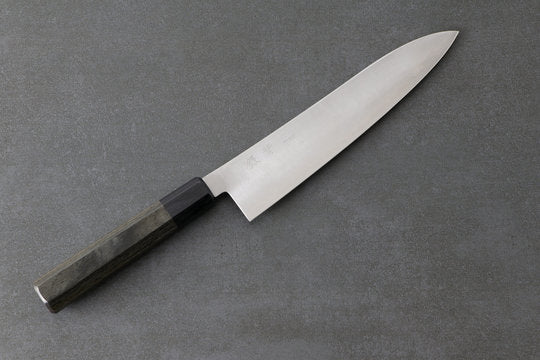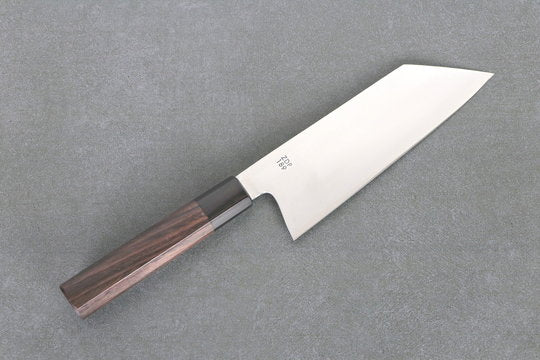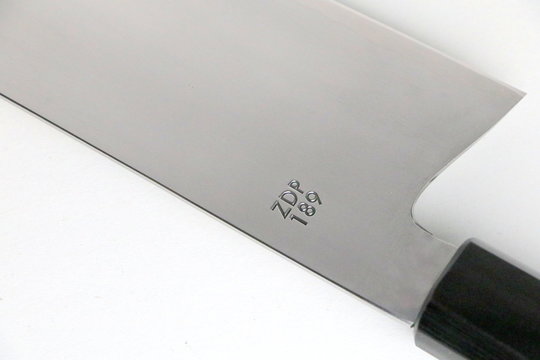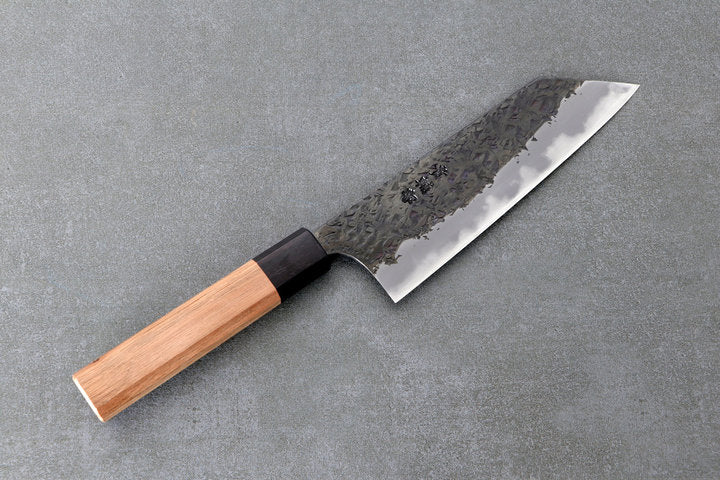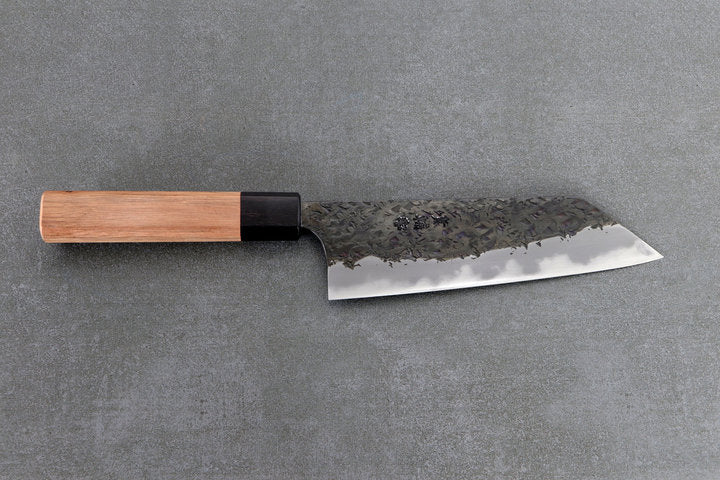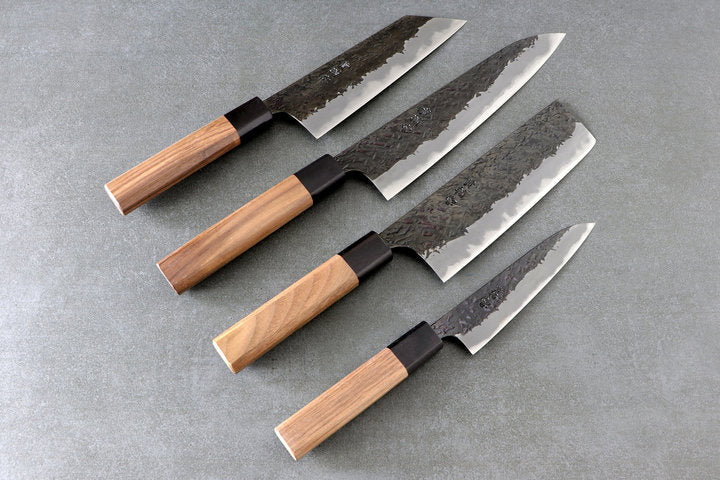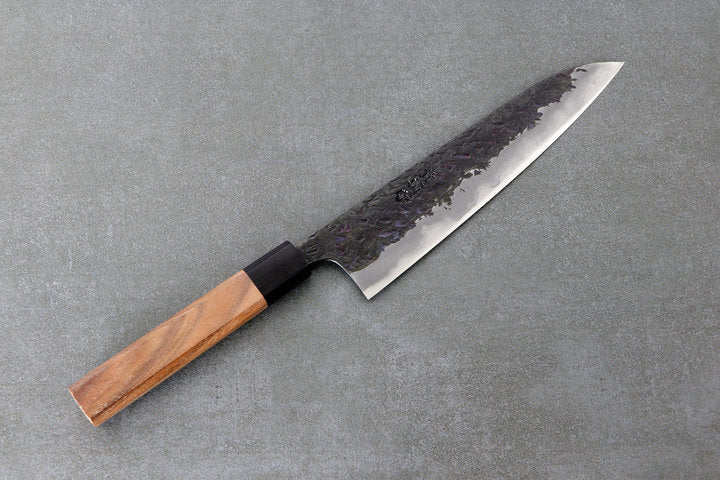
Bunka: The insider tip for professional chef's knives
The Bunka chef's knife is the original form of the Santoku knife and
is therefore an even more traditional Japanese knife than the Santoku. The Bunka knife combines the requirements of being able to make precise cuts and also to cut large quantities like no other kitchen knife. It is the optimal all-purpose knife and has the following properties:
- blade mostly 15 cm - 19 cm in length
- pronounced blade tip for fine and precise cuts
- ideal for fish, meat and vegetables
- straight blade in the rear area with radius to the knife tip
- suitable for chopping, cradle cutting and fine work such as peeling fruit
THE BUNKA KNIFE: JAPANESE VERSATILITY
The Bunka chef's knife is a classic among Japanese knives. Designed primarily for versatility, they are used in the kitchen for coarser cuts, but also for finer cutting work and even ornamentation. This kitchen knife is often compared to the Santoku, as there is a great similarity. However, the shape of the bunka knife has a clear advantage over the santoku knife in many respects, such as precision when cutting.
BUNKA KNIVES POPULAR WITH FISHERMEN IN JAPAN
Due to their light weight and great versatility (in terms of blade length, blade material, hardness of the steel or blade), classic Japanese bunka knives are still popular among fishermen in Japan today, as they rely on an all-purpose knife for daily use that is versatile but at the same time easy to use and light. This is given with the typical blade tip of the bunka. The typical blade length starts at about 170mm.

KNIFE BUNKA FOR MEAT, FISH AND VEGETABLES
Basically, the kitchen knife can be used for meat, fish and vegetables. The removal of skins and tendons can be done very well with this chef's knife due to the elaborated tip. The blade shape has never been changed, so it is a very authentic Japanese knife type and is becoming more and more popular in Europe as well.
ALL-PURPOSE KNIFE WITH TANTO TIP
Like the Gyuto knife, it is also classified as a general-purpose knife. In the past, bunkas were at least on a par with gyutos and santoku knives in terms of popularity.
COOKING KNIVES BUNKA ARE BECOMING MORE AND MORE POPULAR
Today, you mostly find the Santoku and Gyuto in shops, something we at Silverback Knives want to change again. We carry different items (in terms of brand, weight, steel, handle, etc.) so that everyone can find the right bunka for their needs. It is excellent for cutting vegetables, fish and meat. Especially due to the sharp tip in triangular shape, also called K-tip or Tanto tip, fish and meat can be processed precisely. Depending on the area of application, different blade lengths are suitable.
THE BUNKA AND THE TANTO TIP
This special look of the chef's knife makes this type of knife so popular with fans. The tip in the inverted tanto profile makes the knives look martial, reminiscent of the tips of samurai swords.
The Japanese origin of these knives is thus already reflected in the geometry of the blades and makes cutting fish, meat and vegetables a special pleasure. Of course, the exceptional hardness of Japanese knife steel (for example, Aogami or Shirogami steel) also contributes to this. We also offer the necessary accessories for the necessary knife care.
Mostly, this all-purpose knife is used for pushing cuts and for chopping herbs, for example. However, a Bunka chef's knife can also be used to make a cradle cut.
HAND-FORGED JAPANESE BUNKA KNIVES ARE VERY PRECISE
Compared to a santoku, the difference lies mainly in the tip of the knife. While the santoku knife has a crescent-shaped "kamagata tip", a tanto tip has a reverse tip.
The tanto tip is found, for example, on samurai knives and is a classic component in Japanese blacksmithing. The bunka is very similar to the santoku knife except for the geometry of the tip and thus also has the same advantages and disadvantages.
How to cut with the Bunka knife
The high blade allows the knife to be guided precisely and purposefully with the knife hand by gripping the back of the knife. The knuckles of the other hand on the cut material can be placed against the blade of the knife while cutting. This protects the fingers from injury and the cut material can be processed precisely.
If you compare it with the santoku knife and gyuto, this chef's knife with its tanto profile is the best alternative for fish.
Comparison of Bunka and Santoku
In a direct comparison of the two types of knife, the striking tip of the Bunka knife is immediately noticeable. This determines the further geometry and therefore also the direct differences to the Santoku knife. The Bunka blade runs in a stronger radius and can be better used for the cradle cut when cutting. In addition, the tip of the blade is better for finer or more precise cuts. The Santoku also has a tip, but it is less practical and only slightly pronounced. For example, if you want to open a fish or cut into a rind, it is better to use the bunka knife.


